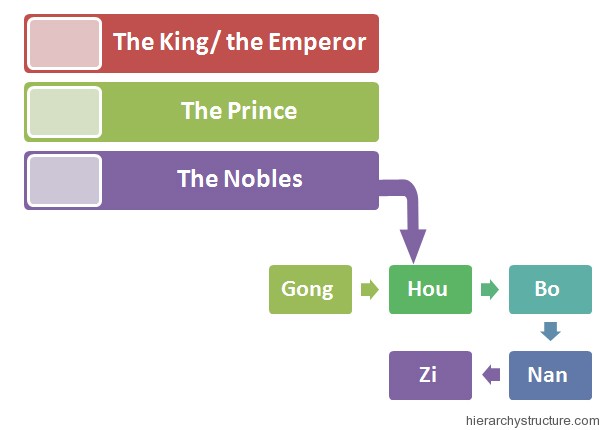Royal hierarchies are set of specific instructions used to diversify people of any region on the basis of the class and social divisions created in those particular areas. These rules and set of instruction vary from one place to another. Royal class is referred to a set of those people who possess top most power, authority and rights in that area and the commoner, means the common man, has to work under these Royal class people as their servants, workers or slaves. Royal class people were always considered superior to other class people in every aspect and conditions of life. In ancient time, almost every country suffered from this discrimination.
Chinese royal hierarchy was almost same as that of the British royal hierarchy. The evolution of royal system in China was between the eras of 1122 BC and 256 BC. This system emerged in the ruling era of the Zhou dynasty to the Qin dynasty. The earlier proof came up with the King Fa of the Zhou dynasty, when he conquered the Shang dynasty’s Yin House, some special ranks and classes were crafted in China that further got modified hence giving birth to Chinese royal hierarchy. This hierarchy is broadly divided into three parts.
The Chinese royal hierarchy is briefly explained as below in a format of descending order means starting with the highest rank of the hierarchy and ending with the lowest one:

- The King/ the Emperor
- The Prince
- The Nobles
The King/ the Emperor – The king also referred as the emperor was the person with the highest power, authority and all the rights in the Chinese royal hierarchy. He was considered the divine son of God. No one was allowed to question his rules. He was the final decision maker in the country and it was the duty of the fellow citizens to follow whatever the King said.
The Prince – Successor to the throne of the king of the China was refereed as to the prince. Mostly son of the king and the royal blood was considered the prince. Special royal training was provided to the prince since childhood to make him thoroughly ready for taking over the throne when the time comes.
The Nobles – The emperor granted some special rights and power to some people of the kingdom and in return these nobles were expected to serve the emperor throughout their life. These nobles were further classified by the King into five different classes:
- Gong – These hailed from the Shang royal family and were the first members among Chinese nobility.
- Hou – The member next to the gong in the Chinese nobility was Hou. The lord of Qi was entitled with this rank.
- Bo – The third member of the Chinese nobility was Bo. This royal rank was granted with the lord of the Qin.
- Zi – This rank of Zi nobles was granted to the lord of Chu.
- Nan –This was the lowest rank in the Chinese royal hierarchy.
Know about Chinese Feudal Hierarchy.
